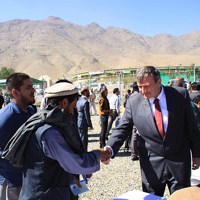U.S. development aid has long been characterized by public sector funding of socio-economic, political and security projects in the developing and underdeveloped world. Over the past few years, however, the United States Agency for International Development (USAID) has begun a number of programs that are being financed by private capital. Among them, in 2011, USAID launched the Private Capital Group for Africa, aiming to generate more than $500 million in private investments to assist small and medium enterprises (SMEs) in sub-Saharan Africa, and the African Agricultural Capital Fund to invest $25 million specifically in agricultural SMEs in East Africa. Last June, USAID set up two private equity funds through the Pakistan Private Investment Initiative to invest in SMEs and a fund in India to raise private capital for its clean energy sector.
These developments were highlighted in a November press release in which USAID explained the emerging emphasis on partnering with banks and other investors to “unlock” private financing for development projects. This innovative approach to development raises questions about the reasons behind increased public-private partnerships, what is being done to encourage private investment in risky markets and the prospects for such partnerships to become a dominant trend in U.S. development policy.
USAID’s enthusiasm for using private capital emerges from a number of factors, not least of which are tightening U.S. budgets and a corresponding decline in overseas development assistance. Moreover, aid dollars have also shrunk as a proportion of total financial flows to developing countries, creating an incentive for development actors to collaborate with the private sector on projects of mutual benefit. Furthermore, development aid is often criticized as an unsustainable solution to development problems. The public-private partnership approach is supposed to overcome that challenge and provide “lasting, durable development” by strengthening businesses, which can spur economic growth, create jobs and increase regional trade and investment.

